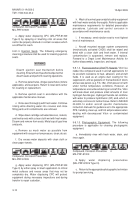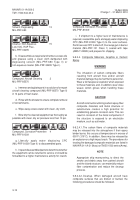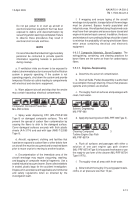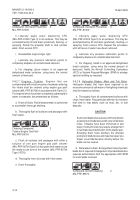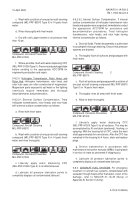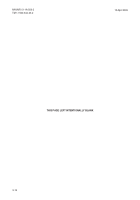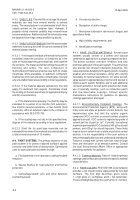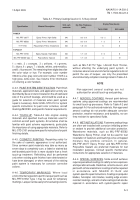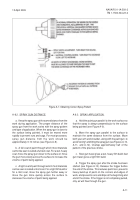TM-1-1500-344-23-2 - Page 172 of 240
A-2
NAVAIR 01-1A-509-2
TM 1-1500-344-23-2
15 April 2009
A-3.2. SHELF LIFE. The shelf life or storage life of paint
materials can vary from several months to several
years. The manufacturer’s recommended shelf life is
usually printed on the container label. However, if
properly stored, material usability may exceed these
recommendations. Additional shelf life information may
be obtained from https://www.shelflife.hq.dla.mil.
A-3.3. SHELF LIFE EXTENSION. Shelf life action codes
determine how long the shelf life can be extended if the
material passes testing.
A-3.3.1. If the inspect/test date of the material has been
exceeded, shake the container, or containers as in the
case of multicomponent paint materials, and examine
the contents. The material shall be homogenous with no
skinning and lumps. The resin component of
multicomponent materials shall be clear with no visible
cloudiness, white precipitate, or sediment. Containers
shall be free from rust and other contaminates. Discard
any unsuitable materials according to local regulations.
A-3.3.2. If the material appears satisfactory, mix and
apply it to aluminum test coupons. Periodically check
the coating on the test specimens for appropriate drying
and film characteristics.
a. If the material dries properly, the shelf life may be
extended for a period of six months (first extension),
four months (second extension), or two months (third
extension). Affix an extension label to the container in
accordance with FED-STD-793.
b. If the coating does not dry in the specified time,
dispose of the material according to local regulations.
A-3.3.3. Shelf life for paint-type materials can be
extended three times if the material is found suitable, for
a total extension period of 12 months.
A-4. PAINT SYSTEMS.
The primary objective of any
paint system is to protect exposed surfaces against
corrosion and other forms of deterioration. Operational
uses for particular paint schemes include:
a. Flat (lusterless or non-specular) coatings for glare
reduction;
b. Special finishes for heat reduction and thermal
protection;
c. Camouflage/stealth (LO) and other detection
countermeasures;
d. Corrosion protection;
e. Dissipation of static charge;
f. Resistance to abrasion, rain erosion, fungus, and
operational fluids;
g. High visibility requirements; and
h. Identification markings.
A-4.1. PAINT SYSTEM MATERIALS. Aircraft paint
systems usually consist of a primer and topcoat
combination applied over a properly prepared surface.
The primer contains corrosion inhibitors and also
promotes adhesion of the paint system. The primer may
also provide low infrared reflectance properties. The
topcoat provides durability to the paint system, including
weather and chemical resistance, along with coloring
necessary for tactical requirements. On some aircraft,
spray sealant is applied between primer and topcoat to
improve paint system flexibility and to add additional
corrosion protection. Aircraft paint systems often make
use of specialty coatings, such as conductive paints
and low-observable coatings. Consult specific
maintenance instructions for guidance on specialty
coatings application and repair.
A-4.1.1. Environmentally Compliant Coatings. The
Environmental Protection Agency (EPA), along with
many local and state air pollution control districts, has
implemented rules that limit the volatile organic
compound (VOC) content, or solvent content, of paints
applied to aircraft. VOC content is reported as grams of
solvent per liter of paint or "g/l". Currently, the national
maximum permissible VOC content is 340 g/l for aircraft
primers, and 420 g/l for aircraft topcoats. These limits
may be less in certain local or state air pollution control
districts. It is the responsibility of the user activity to
ensure that applicable rules are understood and obeyed.
Failure to comply with current rules can result in large
fines and revocation of air emission permits. Consult
the local Environmental Affairs Office or appropriate
permitting authority for guidance.
A-4.1.2. Common Materials. Table A-1 lists the primary
coatings used on Navy aircraft and some specific material
characteristics.
A-4.2. PAINT COLORS. FED-STD-595 (color fandeck)
provides a list of paint colors represented by five digit
numbers. The first digit describes gloss value:
1 = high gloss, 2 = semigloss, and 3 = flat (lusterless).
The second digit describes the color family: 0 = browns,
Back to Top



